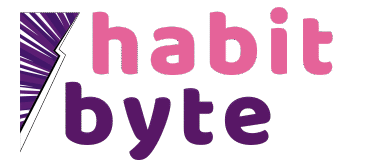How to Create a Daily Productivity Checklist That Boosts Focus
When your to-do list is a jumble, it is easy to start the day reactive and end it frustrated. A simple daily productivity checklist gives you clarity, reduces decision fatigue, and protects time for meaningful work. In a few minutes each evening, you can design tomorrow so it fits your energy and priorities. Follow the steps below to build a checklist you will actually use and finish your day feeling accomplished.
Step 1: Capture everything and define outcomes
Before you plan, empty your head. Spend two minutes listing everything tugging at your attention, including work, personal tasks, and errands. Then group items by outcome so loose tasks become focused goals. This move instantly simplifies planning and makes it easier to choose what matters.
- Write a quick brain dump without editing. Include emails to send, errands, ideas, and deadlines.
- Cluster items under outcomes such as Finish Q3 Report, Prep Client Meeting, or Plan Birthday.
- Rewrite tasks to reflect the outcome, not just activity. Replace Research with Collect three sources for Q3 report.
- Example: Instead of 12 scattered tasks, you now have three outcomes with a few clear next steps under each.
Step 2: Choose 1–3 MITs and script the first move
MITs are your Most Important Tasks, the actions that move high-impact outcomes forward. Limiting yourself to 1–3 creates focus and momentum. To reduce morning hesitation, decide the very first five-minute action for each MIT.
- Select 1–3 MITs that meaningfully advance your outcome clusters.
- Write each MIT as a verb plus result, such as Draft Q3 intro 500 words or Prepare 3 client slides.
- Script the first move so starting is frictionless. For example, Open report template and paste outline or Open slide deck and insert three placeholder charts.
- If you feel unsure about scope, shrink it. Swap Finish report for Draft intro and outline.
Step 3: Estimate honestly and time-block around your energy
A realistic daily schedule respects your natural rhythms and avoids overcommitment. Estimate how long each task will take, then place tasks into time blocks that match your energy curve. Treat blocks like appointments with yourself.
- Estimate durations for each MIT and quick task. If uncertain, reduce scope or add a buffer block.
- Identify your daily rhythm by noting peak, trough, and rebound periods over three days.
- Place deep work during peak focus, routine admin during low energy, and collaboration during rebound.
Sample time-blocking template
- 8:30–8:40 Start-up ritual
- 8:40–10:10 Deep work block MIT 1
- 10:10–10:20 Break
- 10:20–11:20 Deep work block MIT 2
- 11:20–11:45 Admin batch
- 12:00–12:45 Lunch and walk
- 1:00–1:40 Communication window
- 1:45–2:30 Meetings or collaboration
- 2:30–3:00 Buffer or quick wins
- 3:00–3:30 MIT 3 or learning
- 3:30–3:40 Shut-down ritual
Tip: If a task tries to spill over, ask whether you can reduce scope, reschedule, or delegate. Protect the blocks that hold your MITs.
Step 4: Batch shallow work and protect focus
Multitasking drains attention. Batching shallow work and creating friction against distractions preserves your best energy for meaningful tasks.
- Group all quick tasks into one or two daily batches. Examples include invoices, approvals, calendar updates, and short replies.
- Use two communication windows instead of checking constantly. For example, 11:30 and 4:00. Add an away message such as Heads down until 1 pm, I will reply then.
- Follow a one-tab rule during deep work. Keep only the active document open and snooze the rest.
- Try a timer sprint. Work for 25 minutes, then write the next step in one sentence before you break. This parking step makes restarting easy.
- Put your phone in another room during deep work, or set it face down and on silent. If possible, use a website blocker for high-distraction sites.
Step 5: Add bookends and restorative breaks
Your day needs boundaries and recovery. Bookend rituals create clarity at the start and calm at the end, while short breaks prevent burnout and keep your mind sharp.
- Start-up ritual 10 minutes. Review MITs, scan calendar, silence notifications, and confirm your first move.
- Breaks every 60–90 minutes. Stand, stretch, hydrate, breathe deeply, or take a quick walk.
- Lunch away from screens. Even 20–30 minutes improves afternoon focus.
- Shut-down ritual 10 minutes. Log wins, capture unfinished tasks, and write tomorrow’s first move for your top MIT.
Example checklist you can copy today
- Start-up review MITs, check calendar, silence alerts
- MIT 1 deep work first move ready
- Short restorative break
- MIT 2 deep work
- Admin batch quick approvals and invoices
- Lunch and walk
- Communication window email and messages
- MIT 3 or learning
- Buffer for overruns or surprises
- Shut-down review wins and set tomorrow’s first move
Step 6: Commit, Keep Tools Simple, and Iterate Weekly
Visibility and consistency are key. Make your checklist easy to see, use tools that don’t create friction, and review it weekly to make small improvements. Focus on steady progress rather than perfection.
- Commit in writing, use an index card, sticky note, or digital note you check daily, and say your intentions out loud to reinforce focus.
- Keep tools simple. Paper, a notebook, or a lightweight app works best; avoid overcomplicated systems that slow you down.
- Review and adjust weekly. Reflect on what worked, what didn’t, and tweak your checklist so it continues to support your flow and priorities.
Wrapping Up Your Daily Productivity Checklist
A well-crafted daily productivity checklist turns a chaotic to-do list into a clear roadmap for your day. By capturing everything, grouping tasks by outcome, and defining actionable next steps, you reduce decision fatigue and protect time for deep, focused work. Review your checklist each morning to align with your energy and priorities, and adjust as needed, small, intentional planning habits compound over time, helping you finish each day feeling accomplished, calm, and in control.
